TrayHeart
Software TrayHeart
TrayHeart bietet umfangreiche Möglichkeiten zur fluiddynamischen Auslegung von Kolonnenböden, Füllkörpern, Gridpackungen, Strukturpackungen, Kaminböden, Flüssigkeitsverteilern, Tröpfchenabscheidern und Einspeisungen.
Die Entwicklung des Programms begann 1998 und wurde in Kooperation mit Unternehmen der Großchemie, Raffinerie und Einbautenherstellern kontinuierlich weitergeführt. Heute darf es für sich in Anspruch nehmen, als State-Of-The-Art fast alle Einbauten von Kolonnen detailliert berechnen zu können. Die Beschreibung der Möglichkeiten hier im Web soll Ihnen helfen, den Umfang und den Anspruch der Software einzuschätzen. Sollten Sie Fragen zu Datenbankinhalten, zu Berechnungsmöglichkeiten, zu Bauformen oder Anwendungen haben, so sprechen Sie uns gerne an (Kontakt).
Bitte beachten Sie: Es gibt keine Demo-Version von TrayHeart. Wenn Sie die Software unverbindlich kennenlernen wollen, so können wir in online-Meetings Praxisfälle aus Ihrem Bereich bearbeiten.
Inhalt
Programm-Modi

Einzelstufe
Auf einer Stufe werden Flüssigkeit und Gas in Kontakt gebracht. Der Kontakt erfolgt dabei entweder auf Querstromböden (mit unterschiedlichen Elementen wie Ventilen, Glocken, Sieblöchern,...), in Füllkörperschüttungen oder geordneten Packungen. Diese Hardware wird in TrayHeart als Design bezeichnet. Im Einzelstufen-Modus gibt es max. 2 Strompaare und ein Design.

Validierung
Zur Validierung von Modellbeziehungen können Mess- oder Betriebsdaten importiert und anschließend statistisch ausgewertet werden. Damit können z.B. für spezielle Anwendungsfälle (Stoffsysteme) die Tauglichkeit von Modellen überprüft werden. Jeder Messdatenpunkt steht dabei wie die Einzelstufe für einen detailliert beschriebenen Auslegungspunkt (Belastung, Design), dessen Berechnung mit den Messdaten verglichen wird und tabellarisch oder grafisch (Parity-Plot) dargestellt wird.

Stromprofil
Das Ergebnis von thermodynamischen Simulationen ist das Stromprofil einer ganzen Kolonne. Diese Stromprofil-Daten können in TrayHeart importiert werden und entsprechenden Designs zugeordnet werden. Je nach Anwendung können dies unterschiedliche Bodendesigns sein, oder auch Packungen, Einbauten und andere funktionale Einheiten (Einspeisungen, Abzüge, Verteiler, ...). Damit ist es möglich, eine Kolonne detailliert abzubilden (inkl. Stutzenposition, Mannlöchern, Sondereinbauten).
Um unterschiedliche Designs in einer Kolonne vergleichen zu können, lassen sich bis zu drei unterschiedliche Kolonnenkonfigurationen (z.B. "As-Built" und Revamp-Varianten) erfassen. Auch unterschiedliche Fahrweisen (z.B. Winter/Sommer-Betrieb, Laststeigerungen) können parallel verwaltet werden.
Zudem kann die Kolonne als 2D- und 3D-Grafik dargestellt werden.
Kolonnenböden
Bauformen Böden
TrayHeart kann praktisch alle Bodenbauformen berechnen. Im Profilmodus können diese miteinander kombiniert und somit die gesamte Kolonne berechnet und analysiert werden. Für jeden Bodentyp können unterschiedliche Modelle für die Berechnung von Druckverlust, Jetflood, Systemflood, Choke-Flood, Entrainment und zahlreiche andere Größen gewählt werden. Im Folgenden werden die verschiedenen Möglichkeiten der Schachtgeometrien (Anzahl der Fluten, Schachtgeometrie, Wehrformen, Schachtauslaufausführungen) und der Gestaltung der Aktivfläche aufgeführt:
Fluten








Schachtgeometrie





Ablaufwehrformen




Zusätzliche Optionen wie Weir-Spouts oder Antijump-Baffle sind ebenfalls verfügbar.
Zulaufausführung





Aktivfläche
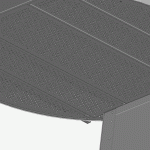
Siebboden
Durch Angabe der freien Fläche, Gesamtlochfläche, rel. Lochfläche, Lochzahl, Lochdurchmesser, Gasgeschwindigkeit im Siebloch,... kann der Siebboden definiert werden.
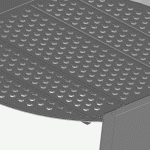
Ventilböden (Bewegliche Ventile)
Aus einer großen Ventildatenbank können bewegliche Ventile ausgewählt und über die Vorgabe von Ventilanzahl, freier Fläche, Öffnungsfläche,... der Ventilspiegel festgelegt werden. In der Datenbank sind die klassischen runden und rechteckigen Ventile unterschiedlicher Hersteller gespeichert. Auch Käfigventile und Mini-Ventile stehen zur Auswahl. Zudem ist auch die Definition von Ventillayouts mit unterschiedlichen Ventilgewichten ("multi-weight") möglich.
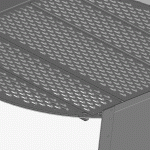
FixedValves (Feststehende Ventile)
Aus einer großen FixedValve-Datenbank kann der gewünschte Typ ausgewählt werden. Die Vorgabe von Ventilanzahl, freier Fläche (Curtain-Fläche oder Grundfläche),... legt den Ventilspiegel fest. In der Datenbank sind runde und trapezförmige Ventile unterschiedlicher Hersteller gespeichert.
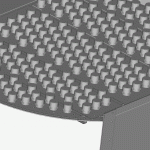
Glockenböden
Glockenhaubengeometrien können entweder direkt erfasst oder über die Datenbank abgerufen werden. Über die Angabe zur freien Fläche, Glockenzahl, Lochdurchmesser, ... kann der Boden vollständig definiert werden.

Tunnelböden
Die Bauformen Streuber (Tunnel in Fließrichtung) und Thormann (Flüssigkeit meandriert um Tunnelhauben) können in TrayHeart abgebildet werden. Über die Definition von Tunnelgeometrie und -orientierung wird der Boden beschrieben.
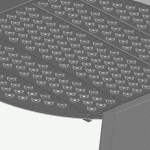
Sonderbauformen
In einer eigenen Datenbank sind Bauformen wie Varioflex (VV12, VV16) und Bayerflachglocken enthalten. Hierfür stehen spezielle Modelle für deren fluidynamische Modellierung zur Auswahl.

Showerdecks / Baffleböden / Sheddecks
Ähnlich der Definitionsmöglichkeiten beim Siebboden kann die Perforation der Showerdecks angegeben werden. Baffleböden und Sheddecks besitzen keine Perforation.

Dualflowböden
Durch Angabe der freien Fläche, Gesamtlochfläche, rel. Lochfläche, Lochanzahl, Lochdurchmesser, ... kann der Dualflowboden definiert werden.
Flüssigkeitsverteiler
TrayHeart kann alle gängigen Flüssigkeitsverteiler berechnen. Die Bauformen Topfverteiler, Rinnenverteiler und Verteilerboden stellen dabei die Grundformen dar. Innerhalb dieser Bauformen können die Tropfstellen als Bodenöffnung, Röhrchen, Wandöffnung und Wandschlitz definiert werden. Auch die Durchtrittsöffnungen für den Gasstrom (rund, eckig, mit/ohne Abdeckung) können definiert werden. Typische Bauformen können als sog. Shortcuts einfach erzeugt werden, aber auch spezielle Designs detailgenau abgebildet werden.
Alle Verteiler werden als interaktive 3D-Grafik dargestellt. Dabei können die Flüssigkeitsaufgabestellen als Kegelgrafik visualisiert werden und so das Verteilbild dargestellt werden.

Topfverteiler
Der Topfeinsatz für kleine Kolonnendurchmesser wird in den Grundabmessungen über seinen Durchmesser und Höhe definiert. Weitere Definitionsgrößen sind der Ringspalt, die evtl. als Gaskamin zusätzlich platzierte Durchtrittsfläche im Topf, sowie die Flüssigkeitsaufgabestelle (Bodenöffnung, Röhrchen mit mehreren Bohrungsstockwerken, Wandbohrungen mit Leitblechen).
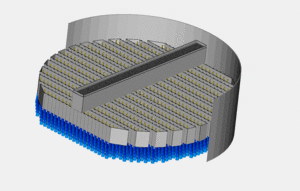
Rinnenverteiler
Die Definition von Rinnenverteilern basiert auf Rinnen-Templates (prinzipielle Abmessung der Rinne und ihre Bestückung mit Austrittsöffnungen). Für den Gesamtaufbau des Verteilers werden diese Templates entsprechenden Rinnen zugewiesen und ergeben so das Verteilspektrum. Änderungen am Template wirken sich sofort auf den ganzen Verteiler aus. Zudem kann die Vorverteilung (Partingbox und Calmingeinsatz) ausgelegt werden.
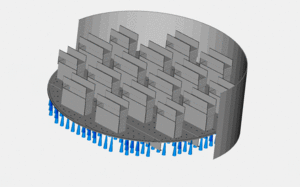
Verteilerboden
Ähnlich der Rinnenverteiler werden die Verteilerböden über Templates (prinzipielle Abmessung der Kamine und die Bestückung mit Austrittsöffnungen) definiert. Für den Gesamtaufbau des Verteilers werden diese Templates über den Kolonnenquerschnitt zugewiesen und ergeben so das Verteilspektrum. Änderungen am Template wirken sich sofort auf den ganzen Verteiler aus.
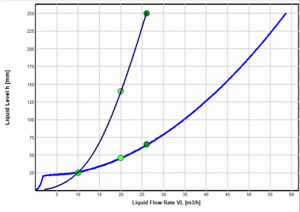
Verteilercharakteristik
Die Verteilercharaktistik gibt den Flüssigkeitspegel im Verteiler für den gesamten Bereich der möglichen Belastungen an. Anhand dieser Charakteristik lässt sich der Betriebspunkt, seine Stabilität und das Betriebsverhalten des Verteilers charakterisieren.

Verteilergüte nach WelChem
Für alle Verteiler steht die Güteberechnung nach dem WelChem-TUM-Zellenmodell zur Verfügung. Dabei werden die Verteilstellen im Raster der berieselten Schüttung ausgewertet und ein integraler Wert für die erste, 10. und 100. Ebene ermittelt. Der so errechnete Gütewert gibt die Qualität in Bezug auf die Schüttung an.

Verteilergüte nach Moore&Rukovena
Für alle Verteiler steht die Güteberechnung nach Moore&Rukovena zur Verfügung. Mit diesem Modell lässt sich eine Verteilergütekennzahl berechnen.
Füllkörper, Packungen und Grids
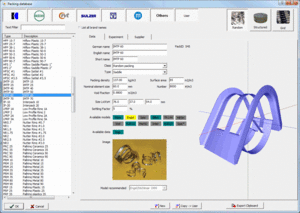
Füllkörper
Es gibt eine große Vielfalt an Füllkörpern (auch Schüttkörper oder regellose Packung genannt). In der umfangreichen Datenbank sind 200 Füllkörper gespeichert. Für alle Füllkörper sind die geometrischen Kennwerte, Berechnungsparameter, meist Foto und ein interaktives 3D-Modell hinterlegt.

Packungen
In der Datenbank stehen 100 unterschiedliche Typen geordneter Packungen zur Verfügung. Die geometrischen Kennwerte und Berechnungsparameter sind entsprechend hinterlegt.

Grids
Robuste Strukturen für Wärme- und Stoffübergang wie auch Abscheidung werden als Grids bezeichnet. In der Datenbank stehen 15 unterschiedliche Typen zur Verfügung, für die jeweils die geometrischen Kennwerte, Berechnungsparameter sowie ein Foto hinterlegt sind.
Trag- und Niederhalteroste

Profiltragrost
Für Schüttfüllkörper werden normalerweise Profiltragroste ("Multibeams") eingesetzt, da sie eine relative Öffnungsfläche von 100% erreichen können. Basis für die statische Berechnung ist die Angabe der aufliegenden Schüttung (Füllkörpertyp, Betthöhe, Holdup). Unterschiedliche Standardgeometrien für die Profilabmessungen können über Shortcuts abgerufen werden.
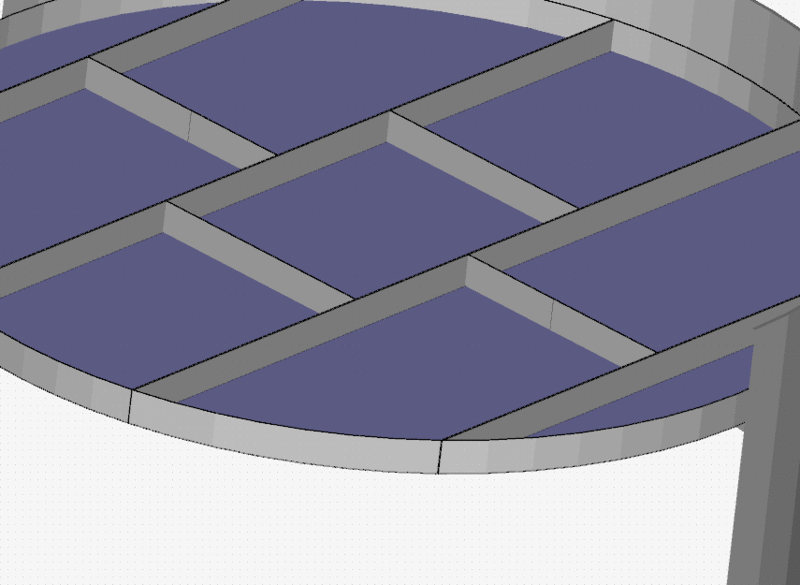
Niederhalterost
Rahmenkonstruktionen mit Streckmetalleinlagen werden bei Füllkörpern verwendet, um die Bewegung des Betts zu verhindern.
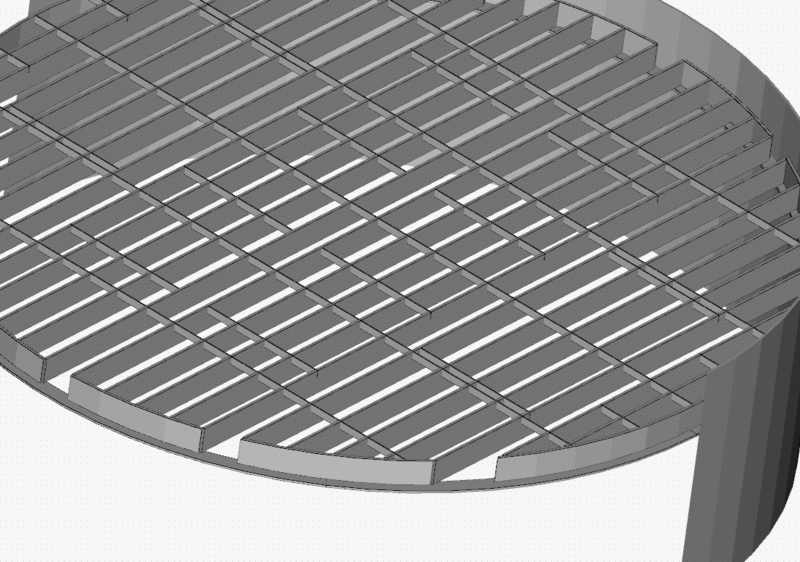
Ebener Tragrost
Für geordnete Packungen werden Flachprofiltragroste eingesetzt. Basis für die statische Berechnung ist die Angabe der aufliegenden Packung (Typ, Material, Betthöhe, Holdup).
Einspeisungen
Die Einleitung von Gas und/oder Flüssigkeit in die Kolonne kann – abhängig von Volumenstrom und Phasenanteil von Gas und Flüssigkeit – in unterschiedlichem Equipment erfolgen. In TrayHeart können einfache V-Baffles, Rohreinleitungen („Spargers“ als Halbrohr, perforiertes Rohr, T-Rohr, H-Rohr und Ladders) und Schaufelsysteme (wie „Schoepentoeter“, „EvenFlow“) berechnet werden.
Tropfenabscheider
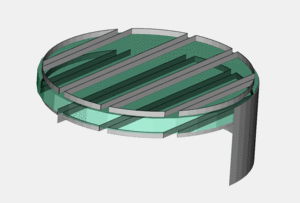
Zur Berechnung des Abscheidegrads von Gestrickabscheidern bietet TrayHeart umfangreiche Möglichkeiten. Die Basis bildet dabei die Datenbank mit unterschiedlichen Gestricktypen (Gestrickdichte, Drahtdurchmesser, Drahtmaterial).
Die Eingangsdaten für die Berechnung sind dabei die Tropfen eines Tropfenspektrums (direkte Eingabe für bis zu 20 Tropfenklassen oder berechnet als Normalverteilung aus einem vorgegebenen mittleren Tropfendurchmesser). Der Gestrickabscheider kann dabei aus bis zu drei verschiedenen Gestricklagen definiert werden.
Für jede Tropfenklasse wird der Abscheidegrad sowie der Gesamtwirkungsgrad berechnet.
Datenbanken
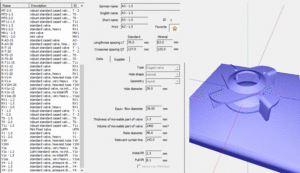
Ventildatenbank
Die Ventildatenbank für bewegliche Ventile umfasst die heute gebräuchlichen sowie historischen Bauformen (zum Nachrechnen bestehender Anlagen). Darunter befinden sich Beinchenventile (rund und rechteckig) und Käfigventile in unterschiedlichen Abmessungen der bekannten Hersteller.

FixedValve-Datenbank
Die FixedValve-Datenbank umfasst die Bauformen der feststehenden Ventile: runde (z.B. VG0 und VG10) oder trapezförmige (z.B. MVG und MMVG) Elemente, sowie auch abgedeckte Öffnungen (wie z.B. ProValve).
Glockendatenbank
In der Glockendatenbank (frei erweiterbar) sind typische Abmessungen und Gestaltung des Skirts von Glockenhauben sowie deren Kamine abgelegt.
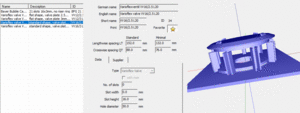
Sonderbauformen-Datenbank
In der Sonderbauformen-Datenbank sind Elemente gespeichert, die sich nicht eindeutig als Käfigventil oder Glocke spezifizieren lassen (wie z.B. Varioflex, Bayerflachglocke). Für diese Bauformen steht eine 3D-Darstellung zur Verfügung.

Füllkörper-, Packungs- und Griddatenbank
In der Füllkörper-, Packungs- und Griddatenbank stehen mehr als 300 Elemente verschiedenster Hersteller zur Auswahl. Die Einträge besitzen eine 3D-Grafik des Bauteils, ein Beispielfoto sowie Identifikationsabmessungen.
Verteilerdatenbank
In der Verteilerdatenbank (frei erweiterbar) sind Standardbauformen von Verteilern abgelegt. Anhand dieser Vorlagen können Verteiler schnell entworfen werden.
Check-Datenbank
In der Check-Datenbank sind Abfragen abgelegt, die zum Prüfen von Ergebnissen konfiguriert werden können. Damit können die Anwender:innen eigenes KnowHow einfließen lassen und Hinweis- und Fehlermeldungen an entsprechende (bauartspezifische) Konditionen knüpfen. Das Programm wird zusätzlich mit einer umfassenden internen Datenbank für Check-Abfragen ausgeliefert. (Siehe Beschreibung unten bei "Berechnung").
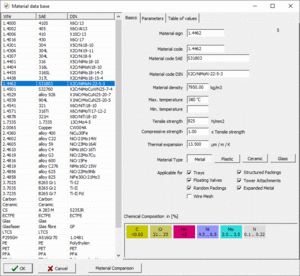
Werkstoffdatenbank
In der Werkstoffdatenbank sind ca. 50 Materialien mit ihren Werkstoffwerten (E-Modul, Dehngrenze, Streckgrenze,...) gespeichert. Diese Materialdaten bilden die Grundlage für die Festigkeits- und Schwingungsberechnung.
Gestrickdatenbank
In der Gestrickdatenbank sind Gestrickspezifikationen (Gestrickdichte, Material, Drahtdurchmesser) von unterschiedlichen Herstellern gespeichert. Diese Daten bilden die Grundlage für die Berechnung bei der Tröpfchenabscheiderauslegung.
Berechnung
TrayHeart basiert auf einem sehr leistungsfähigen Berechnungskern für die Fluiddynamik aller implementierten Bauformen. Für die Berechnung stehen Modelle aus der Literatur, von Herstellern oder auch von WelChem entwickelte Modelle zur Verfügung.
Berechnungsmodelle der FRI
 Mitgliedern der FRI werden die individuellen Berechnungsmodelle freigeschaltet. Dabei stehen die in den Design-Manuals und Topical-Reports veröffentlichten Modellgleichungen zur Verfügung.
Mitgliedern der FRI werden die individuellen Berechnungsmodelle freigeschaltet. Dabei stehen die in den Design-Manuals und Topical-Reports veröffentlichten Modellgleichungen zur Verfügung.
Festigkeitsberechnung
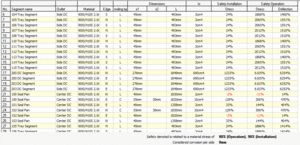 Im Hintergrund läuft immer die statische Berechnung der Einbauten. Damit ist sichergestellt, dass diese Aspekte (Höhe von Ankantungen, max. Breite von Paneelen, Mannlochdurchmessern, Einfluss von Trägern,…) berücksichtigt sind und das Ergebnis einer Auslegungsrechnung auch praktisch umsetzbar ist.
Im Hintergrund läuft immer die statische Berechnung der Einbauten. Damit ist sichergestellt, dass diese Aspekte (Höhe von Ankantungen, max. Breite von Paneelen, Mannlochdurchmessern, Einfluss von Trägern,…) berücksichtigt sind und das Ergebnis einer Auslegungsrechnung auch praktisch umsetzbar ist.
Um die Gefahren von Schwingungen und daraus resultierende Defekte zu erkennen, werden auch Eigen- und Anregefrequenzen berechnet und entsprechende Warnungen ausgegeben.
Checks
Jedes Design hat ungefähr 100 geometrische und fluiddynamische Parameter, die TrayHeart stets auf Plausibilität prüft. Zu diesem Zweck werden im Hintergrund immer Hunderte von Abfragen ausgeführt, die auf Eingabefehler, ungewöhnliche Werte, Überschreitungen von Grenzwerten, evtl. Probleme in der konstruktiven Umsetzung oder auf Modellgrenzen hinweisen. Diese Check-Abfragen basieren auf Literatur, Best Practice, Präsentationen, physikalischen Grenzen und Experten-Knowhow.
 Diese Meldungen werden sowohl in den Unterdialogen als auch auf dem Hauptbildschirm als Einträge im Journalfenster angezeigt, durch farbliche Hervorhebung der betroffenen Werte gekennzeichnet und in den Eingabezellen als Farbhinterlegung markiert.
Diese Meldungen werden sowohl in den Unterdialogen als auch auf dem Hauptbildschirm als Einträge im Journalfenster angezeigt, durch farbliche Hervorhebung der betroffenen Werte gekennzeichnet und in den Eingabezellen als Farbhinterlegung markiert.
TrayHeart verwendet insgesamt mehr als 1000 Check-Abfragen, die individuell in eigenen Check-Datenbanken durch zusätzliches KnowHow ergänzt werden können. Diese Abfragen werden ebenfalls simultan ausgeführt und führen zu entsprechenden Hinweisen, Warnungen und Fehlermeldungen.
Ergebnisausgabe
Die Auslegungs- und Berechnungsergebnisse können tabellarisch und grafisch ausgegeben werden. Alle Ausdrucke können mit dem eigenen Firmenlogo gestaltet werden. Für alle Ausgaben kann die Sprache (deutsch bzw. englisch) wie auch der verwendete Einheitensatz (SI, US, angepasst SI, anwenderspezifisch) eingestellt werden.
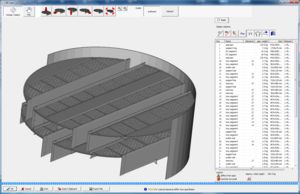
3D-Grafik
Alle Designs werden als 3D-Grafik dargestellt. Diese Grafik ist maßstäblich, dreh- und zoombar und bietet eine gute Hilfe zur Beurteilung der Auslegung. Neben der optischen Einschätzung gibt die Darstellung benachbarter Böden Hinweise zu Problemen bei Zugänglichkeit und Montage. Zusätzlich werden alle Bauteile in einer Liste mit Hauptabmessungen und Gewicht geführt.
Ergebnisgrafiken
Für die unterschiedlichen Einbautentypen stehen unterschiedliche grafische Auswertungen zur Verfügung, u.a. Belastungsdiagramm, Verteilercharakteristik, Ventilcharakteristik (multi-weight Ventilböden), Verteilergüte, hydraulischer Gradient.
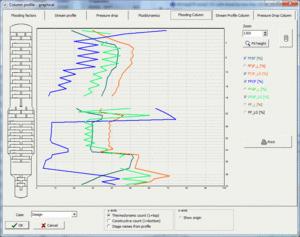
Profilgrafiken
Im Profilmodus können ganze Kolonnen berechnet werden. In verschiedenen Ergebnisdarstellungen können über die Kolonnenhöhe damit Ströme, Druckverlust, Belastungen,... aufgetragen werden. Diese Grafiken stehen auch auf dem Hauptbildschirm und als Ausdruck zur Verfügung.
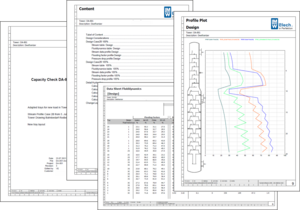
Ergebnisdokumentation (Reports)
Für die Dokumentation der Ergebnisse stehen unterschiedliche Datenblatt-Layouts zur Auswahl.
Die einzelnen Ausdrucke lassen sich zu einer Ergebnisdokumentation zusammenfassen. Durch entsprechende Zusatzseiten (Titel, Inhaltsverzeichnis, Berechnungsmodelle,...) kann so ein Bericht gestaltet werden. Der Aufbau dieser Ergebnisdokumentation wird in der Berechnungsdatei gespeichert und kann auf Knopfdruck - z.B. nach Revisionen - wieder erzeugt werden. Auch lassen sich die Ergebnisse einen Werteexport (ASCII) als Datei ablegen oder in Excel (konfigurierbar) übertragen.

3D-Grafik Kolonne
In der Profildarstellung kann der Aufbau einer kompletten Kolonne definiert werden. Durch die Zuordnung der Designs zu den Stufen des Stromprofils entsteht so der Kolonnenaufbau. Durch Zuordnung der Stutzen und deren Position (Orientierung, Elevation) kann man in der 3D-Ansicht die Lage bzw. auch Kollisionen zwischen den Einbauten und den Stutzen (Messfühler, Feeds, ...) sofort sehen. Da die Stutzentabelle importiert werden kann, können so Revisionen während der Projektumsetzung einfach geprüft werden.
Tools
Neben den Berechnungsmöglichkeiten der Böden und Einbauten sind einige zusätzliche Programmfunktionen hilfreich: Zweiphasenkarten, Berechnung für die Befüll- und Entleergeschwindigkeit von Kolonnen bei Drucktests und Auswirkungen einer Schrägstellung von Böden.
Handbuch
Das Handbuch (englisch) beschreibt auf 700 Seiten die Bedienung, Bauteilcharakteristik und die Berechnungsgrundlagen der Böden und Einbauten. Über Hilfefunktionen gelangt man vom Programm aus an die entsprechende Stelle im Handbuch.
Schulungen

Regelmäßige Webinare widmen sich jeweils einem Themengebiet. Dabei werden die Grundlagen von Bauformen (Böden, Packungen und Einbauten) beschrieben und anschließend das Vorgehen zur Berechnung in TrayHeart erläutert. Alle Lizenznehmer:innen können an diesen Webinaren teilnehmen. Um Termininformationen und Einladungen zu erhalten, schicken Sie bitte eine Mail an webinar@welchem.com.
Für spezielle Schulungswünsche können auch firmenindividuelle Webinare eingerichtet werden.
Lizenzierung von TrayHeart
Für die Nutzung von TrayHeart stehen unterschiedliche Lizenzmodelle zur Verfügung. Diese richten sich nach der Anzahl der Nutzer, dem Funktionsumfang und der Lizenzdauer.
Referenzen
TrayHeart ist bei chemischen und petrochemischen Firmen, Raffinerien sowie bei Einbautenherstellern und Ingenieurbüros im Einsatz. Ein Auszug aus der Liste der Anwender:


















